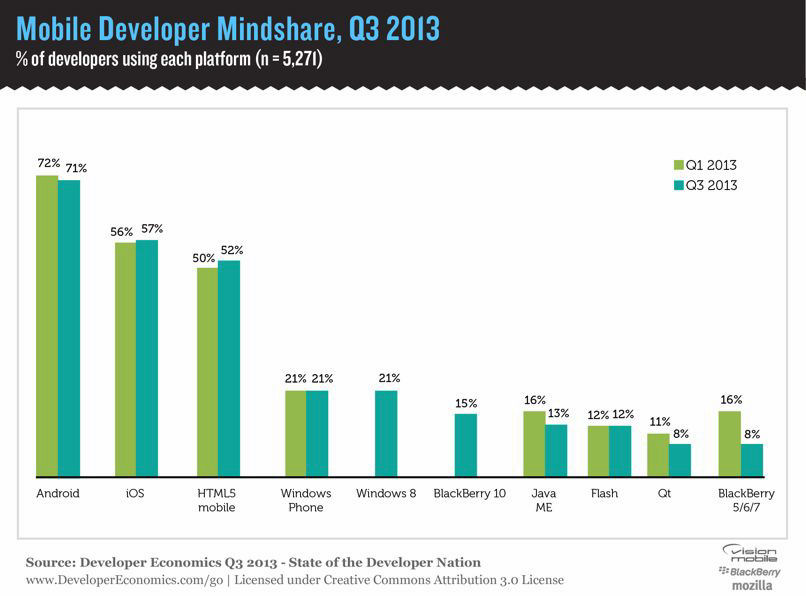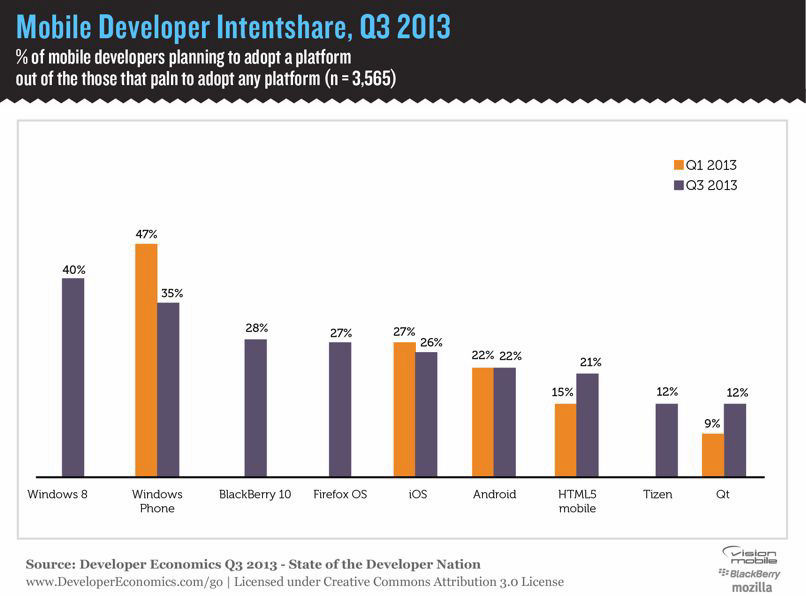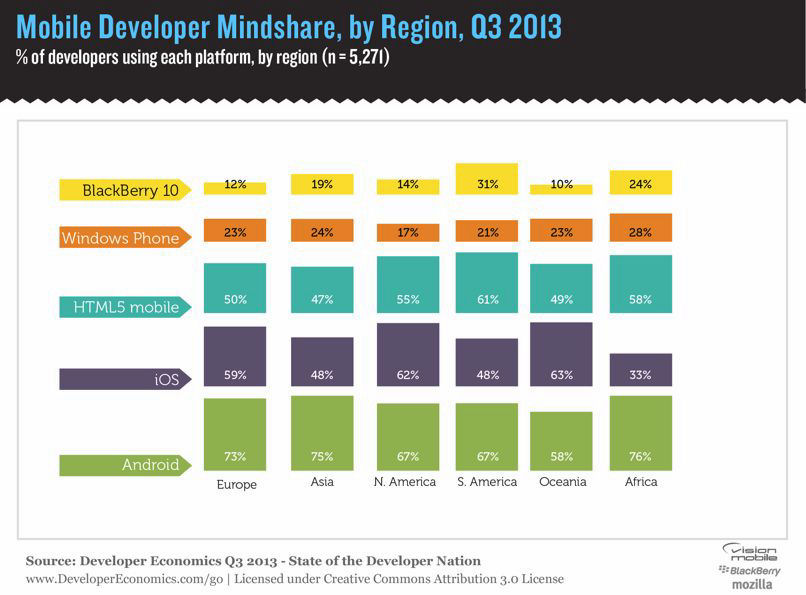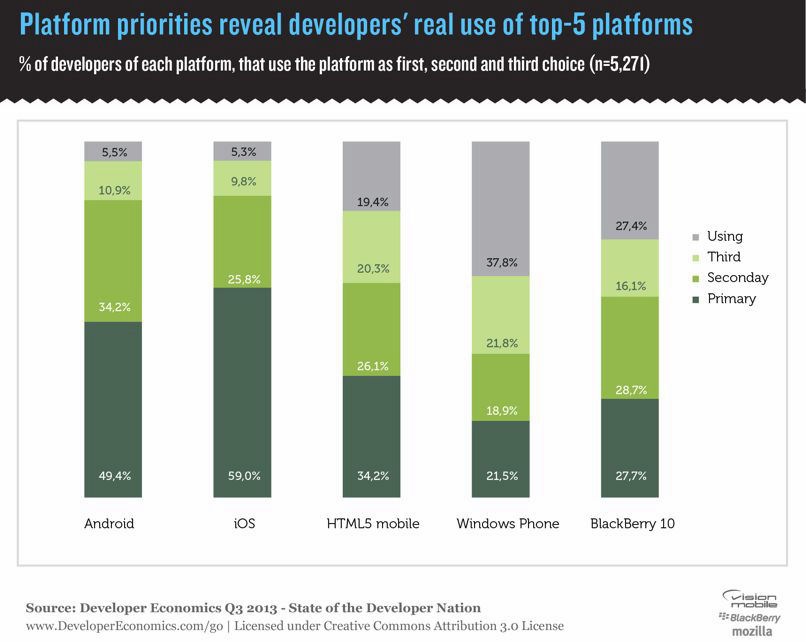In terms of developer mindshare (developers working with a given platform or technology) Windows Phone remains in fourth place, behind HTML 5, iOS, and Android. The report notes that Microsoft has failed to significantly increase developer mindshare in the last 12 months despite extensive marketing efforts and increased sales of Windows Phone devices:
Microsoft is still struggling to convince developers that its platform can compete head-to-head with Android or iOS, since the platform lacks in user reach, which is the most motivator for developers to invest in a platform.
These concerns can be set against the view that Windows Phone's developer mindshare is higher that you might expect given the market share of sales, but it is clear Microsoft still has a lot of work to do.

In terms of develop intentshare (developers planning to adopt a platform) Windows Phone, as might be expected for a youthful and growing platform, scores well, second only to Windows 8. However, intent share has decreased in the last six months as new platforms, such as BlackBerry 10 and Firefox OS, attract developer attention. VisionMobile note that Microsoft continues to struggle to convert developer interest in the platform into adoption:
Microsoft’s inability to convertWindows Phone interest into adoption is due to lack of commercial traction (the equivalent of user mindshare), with Windows Phone sales accounting for just 3% of smartphone sales in Q1 2013.

Developer mindshare varies significantly between different markets. Windows Phone is strongest in Africa and Europe, but is relatively week in North America. This gives some cause for concern given that North America remains the centre of the global app economy.

VisionMobile has also collated data on which platforms developers consider to be their primary, secondary, and tertiary platforms. Windows Phone has the lowest usage as a primary platform of the top five platforms, suggesting Windows Phone developers are less "loyal" than developers on other platforms. However, this can also be seen as a sign that Microsoft is successfully persuading developers from other platforms to use Windows Phone. This would fit in with the recent trend that has seen an increase in the number of existing apps being converted to Windows Phone from other platforms. This is a trend we would expect to see continue as Windows Phone sales increase and companies make a decision to include a Windows Phone app in their strategy, albeit as a third choice behind iOS and Android.

Further details for all platforms, and additional details on mindshare, intentshare, as well as sections on revenue and monetisation can be found in the full report.
